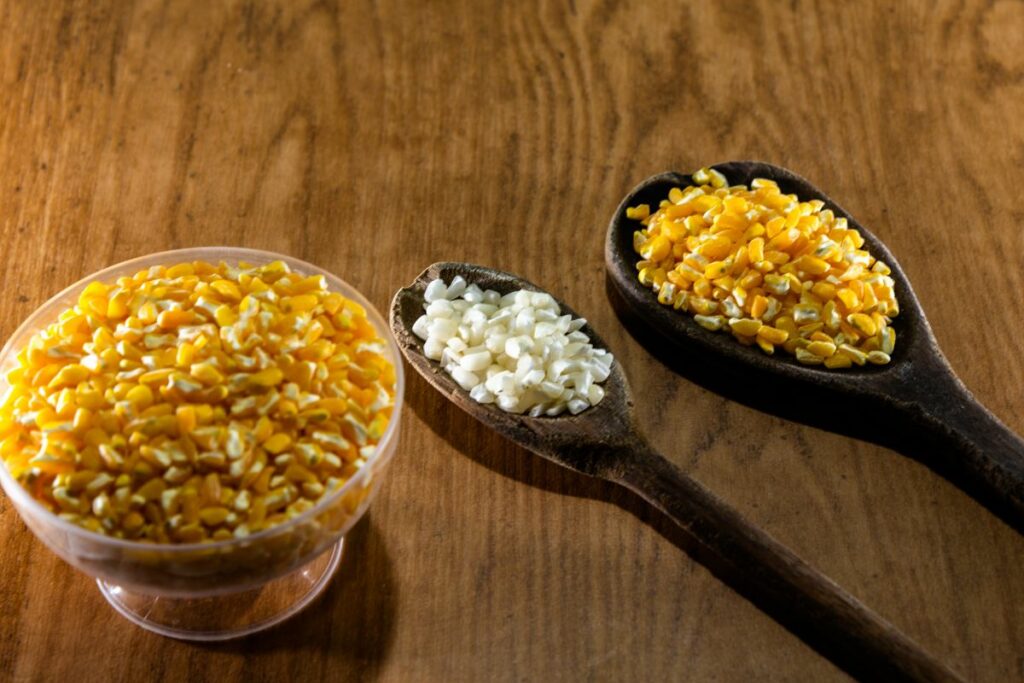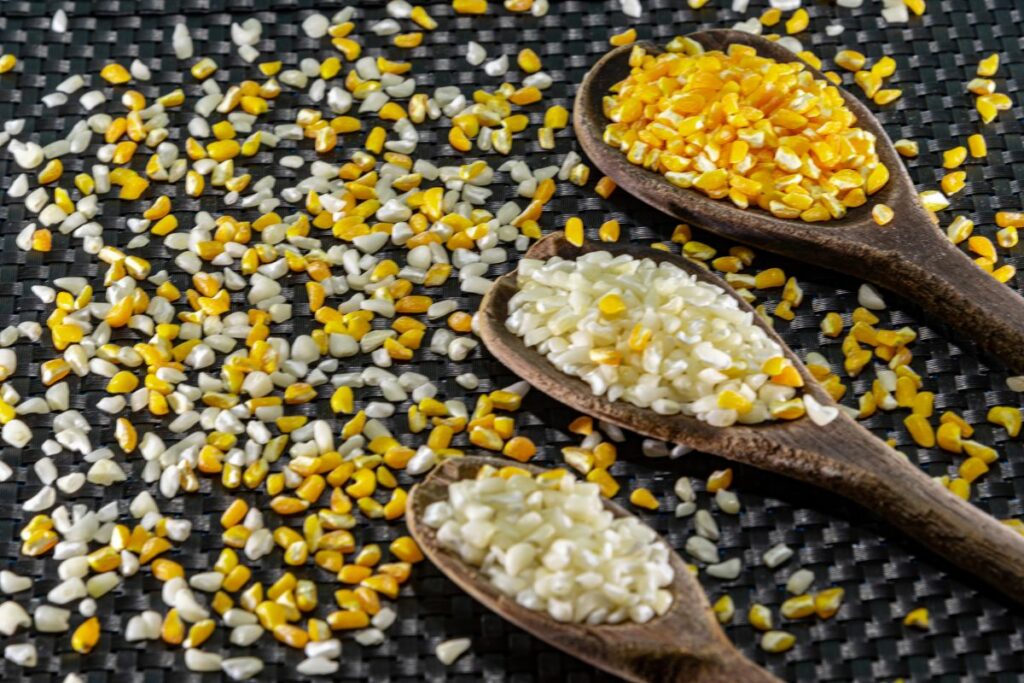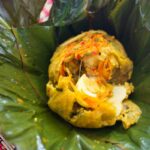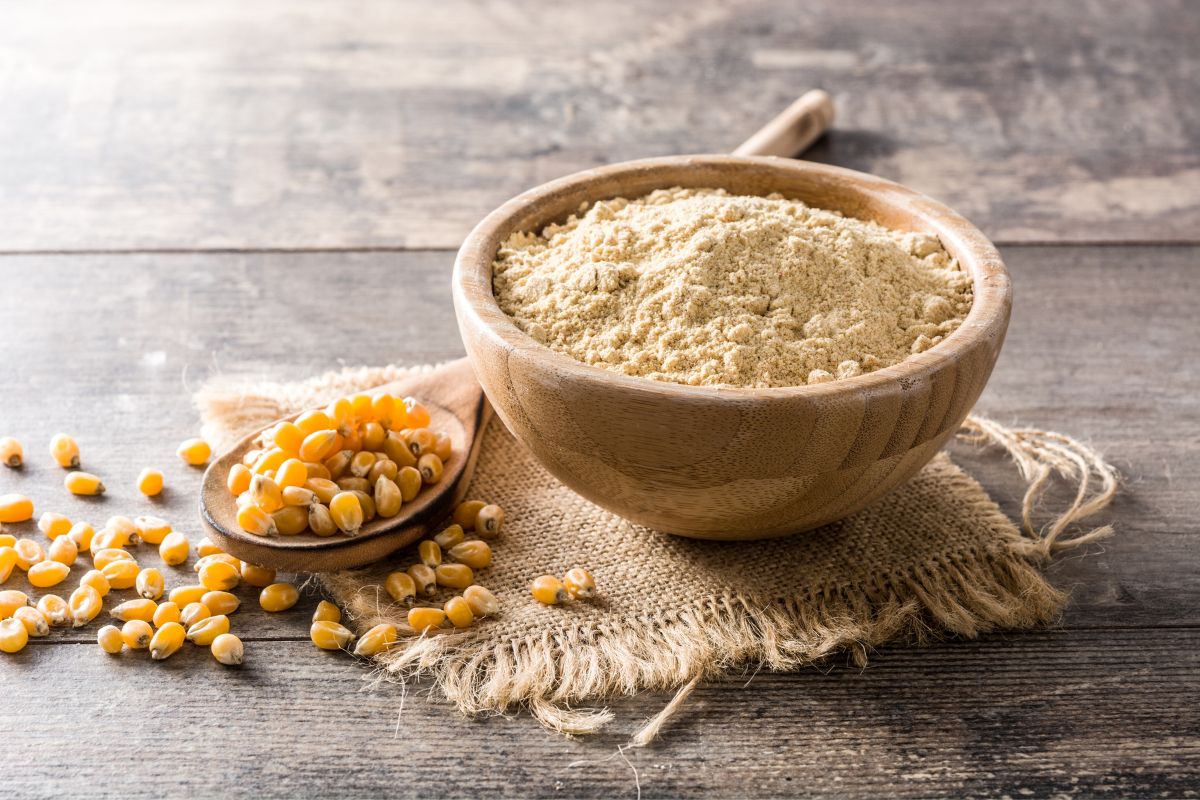Hominy corn is kernels of corn that have been soaked in alkaline in a process called nixtamalization, which is when the husks of the corn dissolve and the kernel itself develops to twice its normal size. This makes the kernels much easier to grind.

Hominy corn is used for a wide range of recipes, including grits and tortillas. It is a traditional ingredient in Mexico and Latin America. Hominy can be crushed up into a dough that is then used to make tortillas and other bread-based snacks.
But what are the properties of hominy? How can you make it? What recipes is it best used in? What flavors can you add to hominy corn? Well, we have all the information that you’ll need to make hominy corn and what you can expect it to taste like.
What Is Hominy Used For?
You can get hominy in many different forms, although the popular form of this kernel is either dried in a bag or in a can with water. These two will have very different textures, although the canned version is ready to cook immediately.
You can enjoy these kernels in much the same way as you might eat sweetcorn (the texture and flavor of these two are actually very similar). You can add some salt, pepper, and butter for that extra creamy and punchy flavor.
You can also press or grind these kernels once they have been cooked to use as a thickener for watery soups and stews. This is a great vegan alternative to a lot of dairy thickening agents such as cheese and milk.
How Does Hominy Taste?
Hominy doesn’t taste that different from sweetcorn, it has a kind of earthy and nutty taste, making it like pistachios. This pairs well with spicier ingredients and helps you make a lot of spicy dishes much milder.
When this is ground up, it makes a very good dough that is pliable and ideal for using to make tortillas from scratch. Getting all the flavor out of these kernels is important, as they can dry out very easily.
So, we would recommend that you soak them for around 12 hours before simmering them gently. This will help to release the most flavor.
Where Can You Buy Hominy?
Hominy can be bought from various locations, although you might find it difficult to get it at your big box supermarket. The best place to get hominy is from Mexican food stalls, stores, or markets, as this is a very in-demand ingredient for this kind of cuisine.
As we have mentioned above, you can get this in dried form or in a can. Both versions you can store for years without it going bad. You can get cracked hominy corn, which is more difficult to grind but much more resilient to high temperatures.
How Best To Store Hominy?
It is best to store these kernels in a cool and dry place. You should place them in an airtight container to reduce the chances of bacteria getting to them and prevent them from drying out further.
Once you have cooked hominy, you can wrap it up in a dish and put it in the refrigerator for around a week. You can also freeze hominy, which will last up to 3 months.
Once you have taken it out of the freezer, allow it to defrost before reheating it in the microwave.
Nutritional Profile Of Hominy Corn

Here are some of the nutritional properties of 100g of hominy corn:
- Energy: 72 kJ (17 kcal)
- Carbohydrates: 14.3 g
- Sugars: 1.51 g
- Dietary fiber: 2.5 g
- Fat: 0.88 g
- Protein: 1.48 g
- Thiamine (B1): 0.003 mg
- Riboflavin (B2): 0.006 mg
- Niacin (B3): 0.033 mg
- Pantothenic acid (B5): 0.154 mg
- Choline: 3.1 mg
- Vitamin C: 0.3 mg
- Calcium: 10 mg
- Copper: 0.03 mg
- Iron: 0.62 mg
- Magnesium: 16 mg
- Manganese: 0.07 mg
- Phosphorus: 35 mg
- Potassium: 35 mg
How Is Hominy Corn Made?
Firstly, you take maize, which is corn that is taken from a field and is yellow and white. You can get this in the form of flakes or whole pellets, unlike corn which comes on a cob.
The raw corn is then soaked in lime, lye, or ash. This is usually done on an industrial scale and involves some harsh chemicals that will make it very difficult to make at home.
The result of soaking this water is the proteins and the carbs in the corn will change, making each individual grain stick together when they are combined with water. This then allows them to be ground down into a paste, which can then be used to make tortillas.
The process of nixtamalization is how tortillas are made, with this, then the corn cannot stick together. This is why mesa takes so different from dishes like polenta.
What Are The Best Recipes For Hominy Corn?
There are many recipes that utilize the special texture and flavor of hominy. Here are just a few that you can try at home:
- Pinto Posole – This is a vegan stew that is traditionally made with pinto beans. Posole is a stew that is made from dried chilis, pork, hominy, and cumin. Together they blend to make an aromatic dish.
- Hominy Au Gratin – This is a cheesy gratin that comes with hominy to add that extra depth of flavor. This also has salty bacon and sweet pimento peppers.
- Beef And Hominy Casserole – This is an amazing tomato and beef dish that really provides plenty of flavor and macros such as protein. You can use lean ground beef or turkey if you want to cut back on the calories.
Conclusion
We hope that our article has given you a glimpse of how you can use hominy and whether or not you should try and combine it with your next meal.
This is a very delicious and versatile kernel and if you want fresh tortillas, then you won’t be able to do without it.
- How To Reheat A Cheesesteak - November 5, 2023
- What Are Three Must Have Kitchen Knives? - September 22, 2023
- How To Protect Edges Of Pie Crust - June 15, 2023








